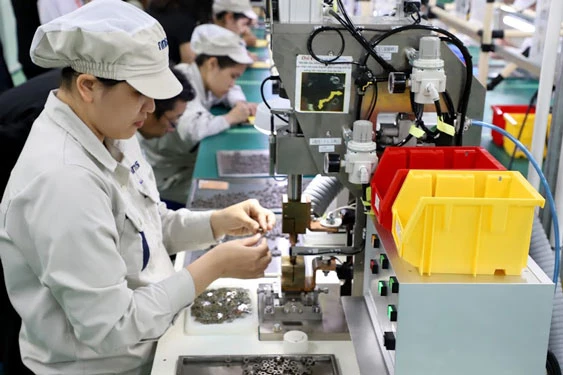
East-West difference
According to statistics of projects valid until 31 December 2020 by the General Statistics Office, the four key partners, namely, South Korea, Japan, Singapore, and Taiwan, have seen the largest number of projects and total registered capital in Vietnam. In addition to the similarity in the legal and business environment, the close socio-cultural environment is also a reason for generating more capital flow from these partners into Vietnam. However, in terms of quality, compared to capital flow from western developed countries, capital flow from these four partners is still limited. The main role of FDI is to help transfer superior technology, production capacity, and management techniques to the host country. Funding from the US or EU nations has an added advantage in this respect.
The quality of a country's capital, in terms of productivity, is measured by gross domestic expenditure on R&D (GERD). According to many statistics, it can be seen that investment flow from the US has a different R&D content compared to capital flow from Japan, and is also much higher than capital flow from South Korea, Singapore, or Taiwan. According to an assessment, Japanese investors want to find a market for available goods rather than a market for exclusive products with high knowledge content, so they need to supply labor at low cost rather than high productivity and high technology, like US investors. In addition, the quality of investment capital is also affected by the quality of labor, which is reflected in the total size of the team of researchers.
The US has the largest number of researchers in countries investing in Vietnam, averaging more than 1.363 million people. This scale is 3.8 times larger than South Korea, 9.6 times larger than Taiwan, and 37.6 times larger than Singapore. This shows that the US focuses on investment criteria such as sustainability and technology, rather than pure investment based on market advantages, resources, and cheaper labor to take advantage of the manufacturing processing capacity of the host country, which brings low value-added products to the host country. In addition, one of the major limitations of the last three decades in attracting FDI is the very low ability to diffuse technology with capital flow from Asian countries to domestic enterprises.
Investment capital from the US has completely different goals and motives from other large investors investing in Vietnam. Unlike Japan, the US often does not pay attention to commodity markets that already have consumers, but mostly considers markets without customers or markets that require high levels of R&D and scientific staff. There have been studies showing that the US is more inclined to invest in exporting knowledge intensive products than Japan.
Tilt towards West
In order to attract high-quality FDI flow from developed countries like the US, Vietnam needs to pay special attention to promoting its location advantage. The focus of this advantage on the above three aspects for capital flow from the US, focuses on the quality of human resources, technology level as per GERD, and transparency and soundness in the legal business system. Besides, the basic infrastructure, especially technical and information technology infrastructure, has been carefully built. According to a report communicated between the Ministry of Science and Technology and Australia's SIRO's Data61 in 2021, Vietnam's budget on R&D activities in 2019 was only 0.53% of GDP, much lower than that of ASEAN countries. This is a big obstacle when attracting FDI from the US.
There have been many scientific research topics that have been written, then stored in glass cabinets because they have not yet followed the practical requirements and the scientific market needs. This requires that the authorities when approving to set higher requirements on practical application. At the same time, it is necessary to consider cutting down on cumbersome procedures and regulations, opening up scientific research work and strengthening the passion and research motivation of scientists. There are policies to support funding, technology, and protection to encourage the creative spirit of the whole people and mobilize social resources for quality R&D activities.
Vietnam is considered to having a cheap labor resource, but competitive labor prices cannot be segregated from labor productivity. During the period 2011 until 2020, Vietnam's labor productivity was 5.1%, higher than the ASEAN average but too low in absolute value. This indicator is still lower than Singapore by 26 times, Malaysia by 7 times, Thailand by 3 times, and the Philippines by 2 times. In addition, if Vietnam still only maintains a decent growth rate, the FDI capital called for will only be as it has been for a long time, which is continuing to outsource production and playing a secondary role in the global value chain. That is to say, FDI inflow only plays the role of exploiting limited advantage in terms of cheap resources and labor, and poor technology transferability.
A common barrier in Vietnam today affecting FDI inflow from Western countries is the level of protection afforded to intellectual property (IP). In order to improve IP protection and meet the needs of investors, Vietnam needs to promote the dissemination and propaganda to raise public awareness about intellectual property, and strengthen the application of science and technology in management and IP infringement detection.




















